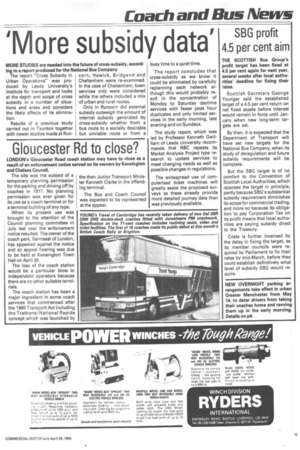'More subsidy data'
Page 21

If you've noticed an error in this article please click here to report it so we can fix it.
MORE STUDIES are needed into the future of cross-subsidy, according to a report produced for the National Bus Company.
The report "Cross Subsidy in Urban Operations" was produced by Leeds University's institute for transport and looks at the depth and scope of cross subsidy in a number of situations and areas and considers the likely affects of its elimination.
Results of a previous study carried out in Taunton together with newer studies made at Run corn, Hawick, Bridgend and Cheltenham were re-examined. In the case of Cheltenham, town services only were considered while the others included a mix of urban and rural routes.
Only in Runcorn did external subsidy outweigh the amount of internal subsidy generated by cross-subsidy whether from a bus route to a socially desirable but unviable route or from a busy time to a quiet time.
The report concludes that cross-subsidy as we know it could be eliminated by carefully replanning each network although this would probably result in the concentration of Monday to Saturday daytime services with fewer peak hour duplicates and only limited services in the early morning, late evening and on Sundays.
The study report, which was led by Professor Kenneth Gwilliam of Leeds University recommends that NBC repeats its Market Analysis Project type research to update services to meet changing needs as well as possible changes in regulations.
The widespread use of computerised ticket machines will greatly assist the proposed surveys as these already provide more detailed journey data than was previously available.




































































































